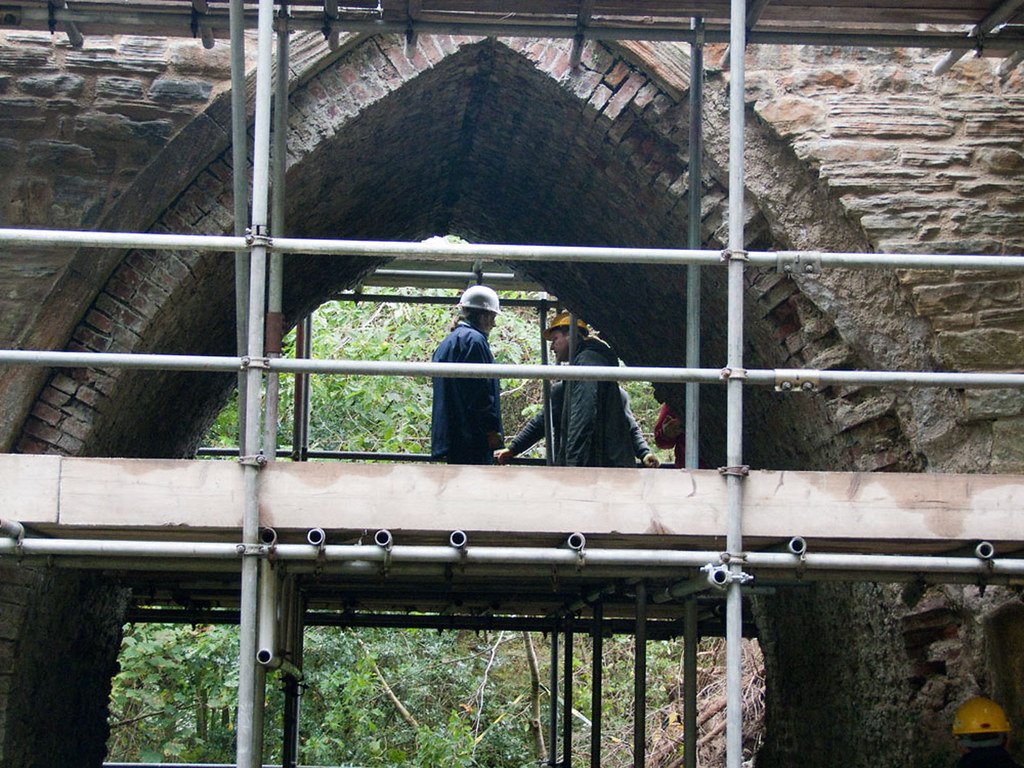The project included significant excavations, carried out by volunteers under the supervision of the Archaeological Practice. This provided a greater understanding of the site and the relationship between the various elements. An archaeological trench was excavated to reveal the top of the arches, which were covered with debris and trees. This revealed a loose stone core topped with a brick flue, only remnants survived. It revealed past repairs.
Volunteers’ archival research established that the arches had been repaired in the 1990s. Using historic images from a number of sources and talking to those involved it was possible to build up a picture of these repairs, which had involved rebuilding the wall heads and formed a hard capping. This work used hard cement mortar and capped the walls along the perimeter, forming a solid upstand that effectively prevented any rainwater from the top of the arches running off the edge. Water was channelled through the loose core of the arches, leading to the crystallisation of water soluble contaminants of the surface of the brick arches below, causing the loss of the brick faces.
The upstanding remnants of the flues also created a channel which trapped water and causing it to percolate through the structure and drain through the brick arches below.

The surface water run-off was also problematic, resulting in the deterioration of the brick arches where the stone hood moulding was missing. The use of a stone hood moulding was not only decorative but practical.

